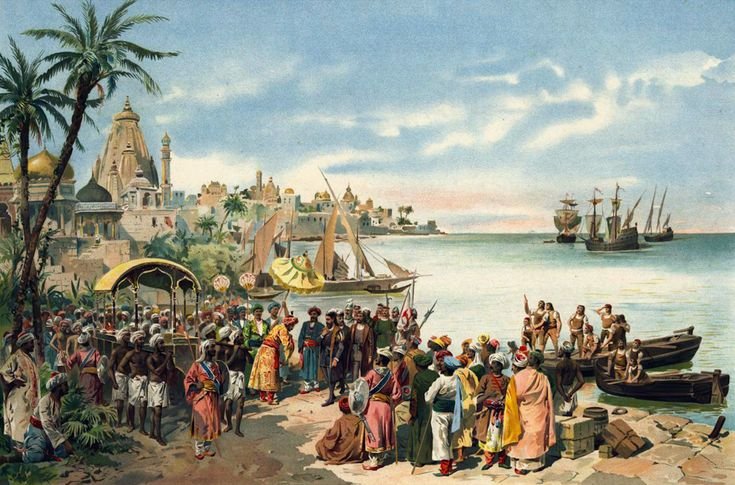The Spice Trade: India’s Influence on Global Culinary Traditions

The story of spices isn’t just about adding a kick to your food; it’s about centuries of exchange, exploration, and cultural fusion. From the beginning of recorded history, spices have played a huge role in shaping the way we eat, think, and live. And when we talk about spices and their global journey, we cannot ignore India. For thousands of years, India has been at the heart of the spice trade, not just as a major producer but as a key player in shaping the world’s culinary landscape. This article explores India’s pivotal role in the spice trade and how its flavors have changed the way the world cooks.
The Origins of the Spice Trade: India at the Center
Spices, in the form we know them today, didn’t just appear overnight. The spice trade has roots that go deep into history—way back to around 2000 BCE when the first Indian merchants began trading spices from the Indus Valley. Ancient civilizations had already recognized the power of spices—not just for flavor, but also for their health benefits and even spiritual significance. For India, being the birthplace of spices like turmeric, cinnamon, black pepper, and cardamom, the trade was an essential part of daily life and culture.
India was always a bridge between two worlds. Its location, in the heart of the Indian Ocean, made it an ideal place for global trade. By 1000 BCE, Indian traders were already sending spices along trade routes to places like China, Arabia, and even Egypt. The early spice routes weren’t just about transporting products—they were the beginning of cultural exchanges. Indian spices were highly valued for their ability to preserve food, enhance its taste, and even cure ailments.
The Golden Age of the Spice Trade: Colonialism and European Influence
While the spice trade was already flourishing in the ancient world, it really took off during the Age of Exploration in the 15th and 16th centuries. With the arrival of European explorers—like Vasco da Gama in 1498—India’s spices became the prize everyone was fighting over. European powers such as the Portuguese, Dutch, French, and British raced to establish colonies in India and the nearby Spice Islands (present-day Indonesia) to control the lucrative spice trade.
Indian spices like black pepper, cloves, and nutmeg became so valuable that they were often referred to as “golden spices.” These spices didn’t just show up in European kitchens by accident. European chefs were eager to introduce these new flavors into their cooking. Suddenly, simple dishes from across Europe were transformed into something richer, spicier, and far more complex. For example, the British, who had settled in India, quickly grew fond of curry. When they returned to England, they brought back the taste for spice-laden dishes, giving rise to the iconic British curry.
India’s Influence on European Cuisine
Indian spices completely changed the game for European kitchens. Before the 16th century, European cuisine wasn’t known for bold, spicy flavors. The use of herbs like parsley and sage was typical, but the range of spices available was fairly limited. That all changed with the arrival of Indian spices. Take black pepper, for instance. It was so highly prized that it was once considered more valuable than gold. The peppercorn became a symbol of wealth and status, and its popularity exploded across Europe.
Soon, European chefs were adding turmeric, cinnamon, cloves, and cardamom to their cooking, creating new dishes and transforming old ones. In Italy, for example, the use of cinnamon and cloves in desserts became a hallmark of regional sweets like panettone and stollen. Similarly, in Spain, Indian spices like saffron and cumin influenced the creation of signature dishes like paella, which is now one of the most well-known dishes of Mediterranean cuisine.
In Britain, the influence of Indian spices couldn’t be clearer. As the British Empire expanded, so did the love for curry. It wasn’t long before curry powder became a household staple in British kitchens, and dishes like chicken tikka masala became iconic. Even today, curry is as much a part of British cuisine as fish and chips.
Indian Spices in the Middle East and Africa
India’s influence didn’t stop with Europe. The Middle East and Africa also felt the impact of Indian spices. Indian traders had long been exchanging spices like turmeric, cumin, and coriander with merchants in the Arabian Peninsula. In fact, Indian spices became so deeply embedded in Middle Eastern cuisine that it’s hard to imagine dishes like kebabs, pilafs, and stews without them.
In North Africa, Indian spices also played a crucial role. The Swahili coast, which was historically a hub of trade between India, Africa, and the Arabian Peninsula, saw Indian flavors make their way into dishes like coconut rice, spiced fish curries, and even desserts. The unique mix of Indian spices with African ingredients led to the birth of new and exciting culinary traditions, blending the flavors of two very different worlds.
The Role of Indian Spices in Food Preservation and Health
One of the main reasons Indian spices were so valuable was their ability to preserve food. In a time before refrigeration, the use of spices like turmeric and garlic helped extend the shelf life of meats and other perishables. But the benefits of Indian spices go far beyond food preservation. Turmeric, for example, has been used in Ayurveda—the traditional Indian system of medicine—for centuries. Its anti-inflammatory properties are now recognized worldwide, and it’s used to treat everything from arthritis to digestive issues.
In fact, Indian spices have made their way into global health and wellness trends. Turmeric, ginger, and cardamom are now commonly found in supplements, teas, and even skincare products. As people become more health-conscious and look to natural remedies, the global appetite for Indian spices—both for their flavor and their medicinal properties—continues to grow.
The Globalization of Indian Spices Today
In today’s globalized world, Indian spices are no longer a luxury available only to the rich. They have found their way into homes and restaurants across the globe. The rise of Indian cuisine in the West, especially in countries like the United States, the United Kingdom, and Canada, has made Indian spices household staples. What’s more, the growing popularity of global cuisine and fusion cooking has led to a newfound appreciation for the complexity and versatility of spices like cumin, coriander, and garam masala.
Indian cuisine, with its rich tapestry of spices, has become a favorite for many food lovers worldwide. Dishes like biryani, dosa, and butter chicken are no longer considered exotic—they are part of everyday dining in many parts of the world. The rise of Indian restaurants, food festivals, and cooking shows has only amplified the global fascination with Indian flavors.
Even in fast food culture, Indian spices are making an appearance. Think of the rise of “spicy” chicken sandwiches or the use of curry flavors in popular fast-food chains. This reflects a broader trend where the global culinary landscape is increasingly influenced by Indian flavors, and dishes are being reimagined with Indian spices.
Conclusion: A Legacy of Flavor and Connection
The impact of Indian spices on global culinary traditions is vast, and its influence continues to shape the way we cook and eat today. India’s role in the spice trade helped open up the world to new flavors, fostering cultural exchanges that have lasted for centuries. From the ancient spice routes to the modern-day Indian food revolution, Indian spices have been at the heart of global cuisine. Whether it’s the heat of black pepper in a French sauce or the warmth of cumin in a Moroccan stew, Indian spices have added depth, complexity, and color to dishes around the world.
As we continue to explore new culinary horizons, one thing is clear: the legacy of the spice trade is still alive and well, enriching kitchens from New York to New Delhi. India’s contribution to global food culture is not just a matter of trade or commerce—it’s about connection, flavor, and the shared history that binds us all together through the food we love.


